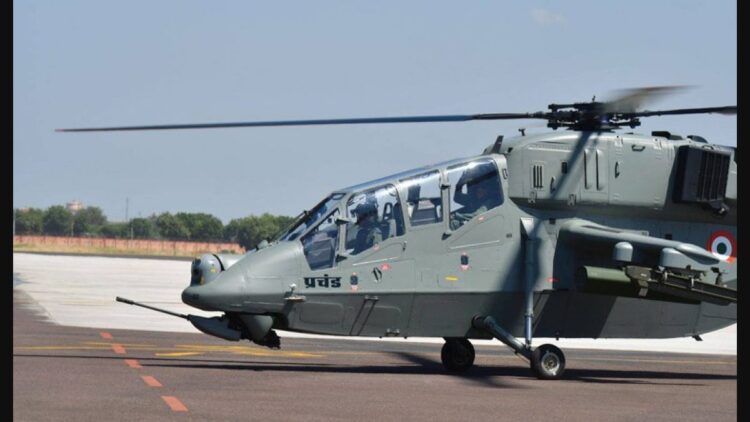‘Aatmanirbhar Bharat is no longer merely a word but has become a mantra and captured people’s imagination’ proudly declared Indian Prime Minister Narendra Modi from the Red Fort while giving a speech on the occasion of India’s Independence Day in 2020. The speech, given in the midst of a COVID pandemic, focused highly on making India a self-reliant nation, what PM Modi called an Aatmanirbhar Bharat. He further described how this vision of a self-reliant India will stand on the five pillars of economy, infrastructure, system, vibrant demography, and demand.
One sector that has seen the rapid advancements in terms of this self-reliant effort is India’s defense sector, with even annual defense production hitting a record high of Rs 1.27 lakh crore in Financial Year (FY) 2023-24 and defense exports touching Rs 21,083 crore, an increase of 32.5% over FY 2022-23.
While the numbers in terms of production and exports are good, they fail to capture the accurate reality of the defense sector vis-à-vis India’s national security. Nowhere is it more visible than in India’s aerospace sector, especially in the manufacturing of India’s advanced aircraft. The Indian Air Force’s Light Combat Aircraft (LCA) Tejas is a good example of it. Originated in the 1980s, the first version of the aircraft was inducted into the IAF in the year 2016. At present, it has two fully operational squadrons, 18 Squadron and 45 Squadron, of the aircraft.
The upgraded version of the aircraft LCA Tejas Mk1A were supposed to be delivered by October 2024. The delay in production and manufacturing of these aircraft resulted from the delivery delay of General Electric F404 engines by American GE Aerospace. As per the recent media reports, GE will only be able to start delivering the engines by April 2025, significantly delayed from its original deadline of March 2023. This two-year delay has not only cost India in terms of its aircraft manufacturing capabilities but also has affected the balance of air power in the region since GE’s failure to meet the timeline for delivering engines delayed the delivery of the upgraded Tejas aircraft to the Indian Air Force (IAF).
This again raises serious concerns for India’s Advanced Medium Combat Aircraft (AMCA) project, under which fifth-generation stealth fighter jets are to be manufactured. While the later versions of AMCA are believed to be powered by India’s indigenous aircraft engine, the initial versions of the aircraft will be powered by General Electric F414. Compared to India’s adversaries, its 5th generation aircraft manufacturing program is remarkably delayed due to political and bureaucratic reasons. While the development of the AMCA will make India enter the elite club of countries that possess the capabilities to design and develop advanced 5th generation aircraft, there are many issues before it actually becomes a reality. As per the estimation, the AMCA will be inducted in the operational role by 2030, by which time India’s adversaries such as China and Pakistan will be way ahead in terms of offensive aerospace power. China’s People’s Liberation Army Air Force (PLAAF) has a fleet of more than 200 Chengdu J-20 stealth twin-jet fifth-generation fighters. While India waits for engines, these aircraft are actively getting ready to fly combat missions.
Further, the collaboration between China and Pakistan in terms of advanced aircraft manufacturing makes the situation more intricate for India, who already anticipates the scenario of two front wars with both adversaries. The Pakistan Air Force (PAF) is scrutinizing all the options to add more advanced fifth-generation aircraft to its existing fleet that will supplement its F-16 squadrons. The most likely contender will be the Chinese J-31, also known as the Shenyang FC-31, which is believed to be a Chinese replica of American F-22 fighters. In January this year, Pakistan Air Force (PAF) chief Air Chief Marshal Zaheer Ahmed Babar said in this context, “The foundation for acquiring the J-31 stealth fighter aircraft has already been laid, which is all set to become part of the PAF’s fleet in the near future.”
In the next few years, India will be in a situation where its eastern neighbor China and western neighbor Pakistan both will have operationalised fifth-generation aircraft while it awaits engine delivery from a foreign manufacturer. The answer to this predicament lies in the Aatmanirbhar Bharat, or self-reliant India. However, at the present time India is stuck in the catch-22 situation, which was rightly explained by India’s Chief of the Air Staff (CAS), Air Chief Marshal AP Singh, just before he took over as an IAF chief when he said, “Aatmanirbharta (self-reliance) is what we are riding on, but this self-reliance cannot be at the cost of the nation’s defence.” Here, the more efforts of self-reliance, ignoring the existing security requirements may result in adversely affecting the national security of the country, while ignoring those efforts of indigenisation will be threatening to the country’s security in the near future.
The solution lies in the middle path in which India keeps bolstering its national security by purchasing modern aircraft from the allies. Some experts and analysts have suggested the purchase of Lockheed Martin F-35 for the IAF while simultaneously working on indigenous projects, making sure to reduce reliance on foreign manufacturers. Most importantly, India needs to find a way to develop its own indigenous aircraft engine; without it, all efforts of Aatmanirbhar Bharat will be in vain. The spirit of Aatmanirbhar Bharat has to transcend beyond slogan and be reality if India is to maintain its position as one of the most important countries in Asia amid the ongoing great power politics.








